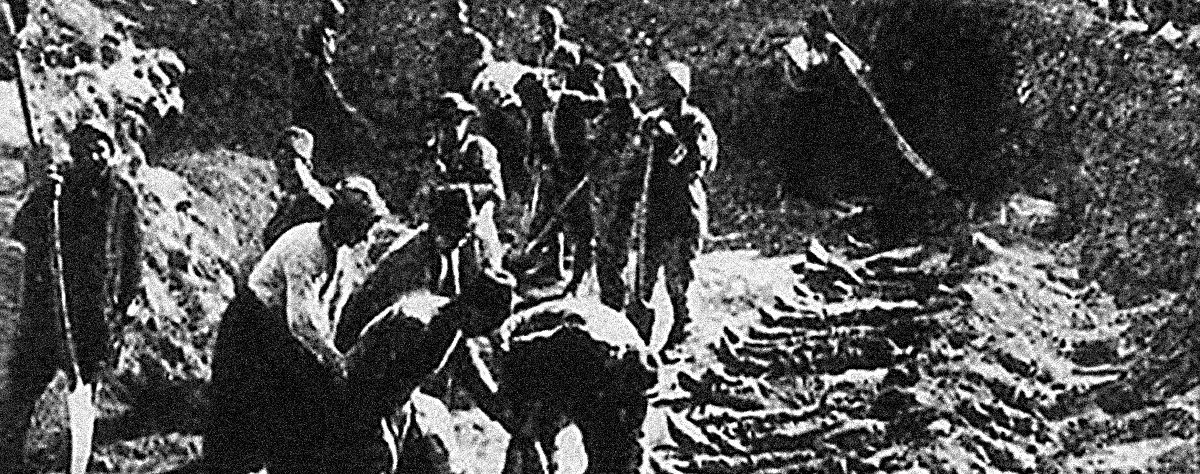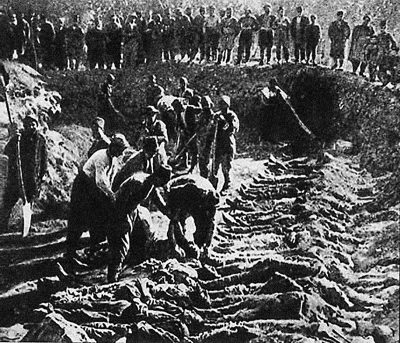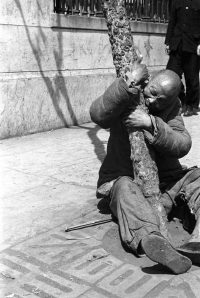Source:El Debate
9 December marks the UN International Day of Commemoration and Dignity of the Victims of the Crime of Genocide and of the Prevention of this Crime.
In September 2015 the United Nations General Assembly, under Resolution 69/323, proclaimed 9 December as the International Day for the Commemoration and Dignification of the Victims of the Crime of Genocide and for the Prevention of that Crime. As stated in the Convention, the purpose of the day is to raise awareness of this crime and its role in combating and preventing it, and also to commemorate and honour its victims.
First international legal definition
The Convention on the Prevention and Punishment of the Crime of Genocide is a United Nations document adopted in 1948 and known as the “Genocide Convention”. It is a treaty in which the international community affirms its commitment to never again commit the atrocities of genocide, as well as providing the first international legal definition.
Thus, according to the UN, genocide is any of the following acts perpetrated with intent to destroy, in whole or in part, a national, ethnical, racial or religious group, as such:
- Killing of members of the group.
- Serious harm, bodily or mental, to members of the group.
- Intentional subjection of the group to conditions of existence calculated to bring about its physical destruction in whole or in part.
- Measures intended to prevent births within the group.
- Forcibly transferring children from the group to another group.
In addition, according to the UN, the factors that trigger genocidal conflict are identity-related and tend to occur in societies with diverse national, racial, ethnic or religious groups. What triggers conflict are “its consequences in terms of access to power and wealth, services and resources, employment, development opportunities, citizenship and the enjoyment of fundamental rights and freedoms”. Thus, in order to prevent genocide, it is essential to determine and identify these factors and then seek ways to reduce these practices and eradicate them.
Since no society is entirely homogenous, genocide is a global threat.
The most atrocious genocides of the 20th century
The 20th century was marked by a great wave of crimes against humanity that wiped out millions of men and women in political, religious and ethnic clashes that created major inequalities in the administration of these diverse populations.
As proof of these atrocities that were carried out and that devastated part of history, we find the following genocides:
1.- Armenian Genocide
Also known as the Armenian Holocaust or Great Crime, this was the persecution and extermination suffered by the Armenian Christians of eastern Anatolia. Already at the end of the 19th century, the Muslim population of the Ottoman Empire had been subjected them to massacres and expulsions at various times, but the worst of these took place in 1915.
After the defeat of the Ottoman army against Russia at the Battle of Sarikamis, the Young Turks (the party in power in Turkey at the time) blamed their defeat on the Armenian population’s support for the armies of the Russian Tsar. They disarmed all the Armenians in their army and later executed them.
Mass deportations then began, followed by a systematic campaign of murder carried out by irregular forces composed mainly of Kurds and Circassians from the area. The survivors were taken to concentration centres in the Syrian desert where death (by starvation or firing squad) awaited them. Of the 2,400,000 Armenians on Turkish territory in 1897, only 120,000 remained after the end of the massacre in 1918.
2.- The Holocaust
However, the genocide par excellence is the Holocaust or Shoah, whose origins lie in the racial hatred of the Jews in 19th century Europe, who were stigmatised as an anti-social group and responsible for all the ills of humanity. This reached its dramatic peak in Nazi Germany, with all the racial segregation laws and the subsequent “final solution” for the Jewish issued between 1941 and 1945. The Holocaust is possibly the most important collective crime in the history of mankind, with more than six million murders, i.e. the extermination of three quarters of European Jews.
3.- Holodomor
This is the name given to the Ukrainian genocide, a famine that devastated the territory of the Socialist Republic of Ukraine, Kuban, Yellow Ukraine and other regions of the USSR in the context of “collectivisation”, a policy implemented by Stalin to consolidate the land under popular rule and the labour force on collective and state farms during 1932 and 1934.
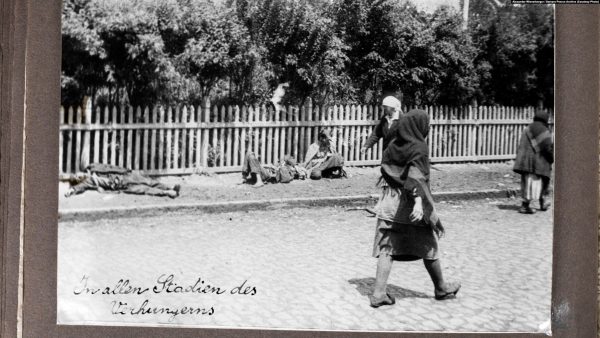
In an image described by Wienerberger as depicting “all stages of starvation,” three men lie dead or dying on the streets of Kharkiv as passersby pay them scant attention.
This policy was proposed as a solution to the crisis in agricultural distribution, but in reality it wiped out those farmers and peasants who refused these new measures and intensified the already existing situation of famine and shortages by closing the borders to block imports and prevent people from leaving the country, as well as creating special brigades to break into houses and take away all the food.
This physical extermination through starvation resulted in the deaths of four million people, which until the 1980s was unknown to the world.
4.- The Great Purge
This was the name given to the campaigns of political repression and persecution carried out in the Soviet Union in the late 1930s.
This purge began in 1936 with three trials in Moscow, in which several members of the Communist Party were accused of conspiring with the capitalist axis. The immediate execution of 22,500 suspects and the deportation to the gulags of 16,800 detainees followed.
These persecutions continued for the next two years: in 1937 the death toll reached 72,950 and 259,440 people were imprisoned. And in 1938 more than 48,000 Communist Party members were executed. High-ranking politicians and army officers were sentenced for fear of a military uprising of the Armed Forces, as well as to suppress any possible dissent.
5.- Nanjing Massacre
During the wars of territorial expansion carried out by the Japanese Empire, 300,000 civilians were killed in the city of Nanjing, China, in just six weeks at the end of 1937, when the Japanese army decided to bomb the city.
The civilian population, especially women, were the worst affected. During the attack on the city, one of the largest gang rapes in history took place, with around 80,000 women subsequently killed.
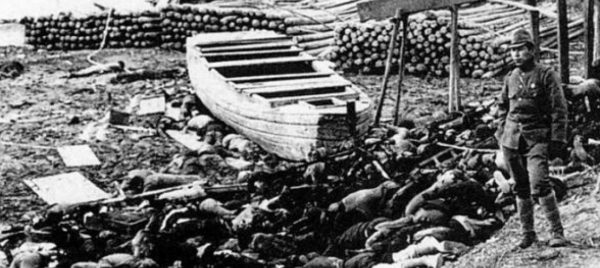
A Japanese soldier pictured with the corpses of Chinese civilians by Qinhuai River
6.- Mao’s Genocide (Cultural Revolution)
Mao Zedong opened a decade of persecutions, indoctrination and assassinations between 1966 and 1977 with the excuse of eliminating the bourgeois and subversive elements hidden in Chinese society.
This massacre was known as the Cultural Revolution, in which the communist leader persecuted anyone who went against the party’s single-minded thinking. During the Cultural Revolution, tens of millions of people were persecuted, with an estimated death toll of 20 million. This already high figure happened just after the Chinese Great which caused an estimated 43 million deaths according to Chen Yizi’s studies.
Responsibility to protect
Heads of state and government affirmed at the 2005 Summit on Development, Security and Human Rights that “each state has the responsibility to protect its population from genocide, war crimes, ethnic cleansing and crimes against humanity“.
It was also agreed that the international community should help states exercise this responsibility, as well as build capacity to protect populations at risk before conflicts and crises erupt. And in the event that it became clear that a state was failing to protect its population from these crimes, the international community would take collective action against that state through the Security Council and in accordance with the UN Charter.
Share this article
On This Day
No Events
History of Spain
26 August 2020
27 January 2021
Communism: Now and Then
23 December 2022
28 July 2021
